Your 26th Week
You’re in the last
lap and, although your belly is probably big, you’ve still got a lot
more expanding to do. Your baby will be moving around quite vigorously
and may even respond to loud noises and music. Nerve cells in her brain
are beginning to connect and her coordination is improving. Keep your
own brain stimulated by going to prenatal classes for fun, company, and
information.
NOTE
You’ve reached the third and final trimester and will be heavily pregnant by now
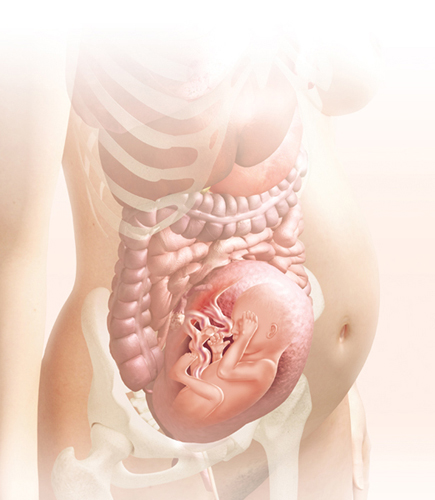
You are 25 Weeks and 1 Day 104 days to go…
Your prenatal classes will give you a chance to learn about labor, birth, and life with a newborn, and make new friends.
Your baby today
Here the baby is looking directly upward. The profile is nicely
detailed with the nose, lips, and chin clearly outlined. The neck is
still quite short so, as this image shows, the head is still held quite
close to the chest.
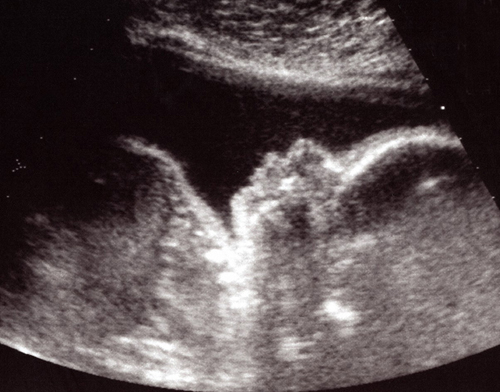
If you arranged them earlier in your pregnancy ,
You may be starting prenatal classes, also called childbirth education
classes, about now. The Lamaze Method and The Bradley Method are common
classes. Ask your health-care provider, friends, and staff at the
hospital where you’re giving birth about where to find a class near you.
In the class, you may be taught, for example, relaxation or breathing
techniques, or be told about the different types of pain relief
available. Some hospitals also offer newborn care classes, where you’ll
learn all the basics: How to diaper, dress, feed, carry, and generally
take care of your baby when she is brought home from the hospital. It’s
common to feel excited about the classes and eager to learn about what’s
going to happen and to meet other people going through the same
experience. But prenatal classes are not just about gathering
information, they’re also about meeting others, which is difficult for
some people. However, since you’re all parents-to-be, you’re likely to
find things to talk about. Just talking with others about your symptoms
or worries can help, especially if they’re going through the same
emotions as you. It can be reassuring to know that you’re not the only
person to feel a certain way.
If you do make friends in your prenatal class, this support group can also be very helpful after you all have your babies.
… Your body
Rib pain
As the uterus expands,
the rib cage is pushed outward to make room for it, and this can lead
to rib pain or discomfort. This is not inevitable, but it is more likely
if you have a smaller than average body frame or you’re carrying twins
or more. It can be worse if your baby kicks a lot or if she spends a lot
of time in the breech position since her head will push against your
diaphragm and rib cage.
Sitting down may
make the pain worse since being seated compresses your internal organs
more. If you have a sedentary job, get up and move around as often as
you can, and if you’re forced to sit for long periods, keep adjusting
your position until you find one that’s comfortable.
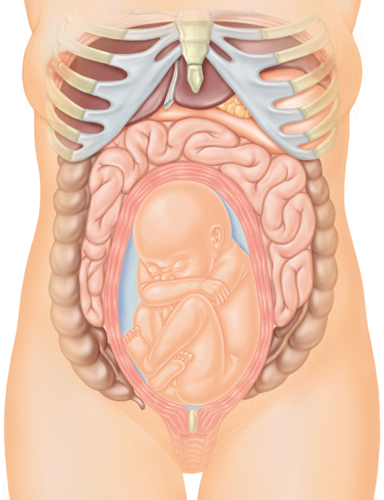
… Doctor
| Q: |
I think I have a vaginal infection. Will this harm my baby?
|
| A: |
A vaginal infection is very unlikely to harm your baby since
the mucus plug around the cervix stops infection from reaching her. The
symptoms of an infection—itching, irritation, and a discharge with an
unpleasant odor—are uncomfortable. Your doctor will prescribe medication
to clear it up.
|
You are 25 Weeks and 2 Days 103 days to go…
Two tiny glands control your baby’s growth and development now, and give her the ability to face life’s stresses later.
Your baby today
This image shows the baby in profile, this time in 3D. The coils
of the umbilical cord are just seen in the background passing behind
the baby’s head. The eyelids can be seen, still firmly closed. Fat
reserves are now giving the face a much more rounded contour.
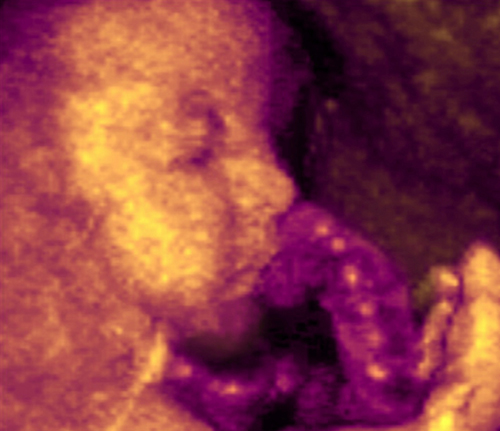
Relative to body size,
your baby’s adrenal glands are 20 times larger than your own. The
adrenal glands are roughly triangular in shape, with their base wrapped
over the top of each kidney. They have an outer layer, or cortex, which
releases steroid hormones such as cortisol, and an inner layer, or
medulla. Adrenaline and the related hormone noradrenaline are secreted
from the medulla in response to stress.
Adrenaline prepares the
body for a “fight or flight” response, increasing the availability of
glucose, speeding up the heart rate, and maintaining or raising blood
pressure. These are vital adaptive responses for your baby that will
help to maintain a stable environment within the uterus and prepare her
for the stresses of life later on in the outside world.
It is the outer
cortex, however, that needs to work hard, producing many hormones that
help to coordinate your baby’s growth and development. The cortex
produces three types of hormones: mineralocorticoids that regulate salt
balance; glucocorticoids that help to control the availability of
sugars, fat, and amino acids in the bloodstream; and androgens,
male-type sex hormones, such as testosterone. It is the cortex that
accounts for the large size of your baby’s adrenal glands. After birth,
in the first couple of weeks, the adrenal glands rapidly reduce in size.
… Doctor
| Q: |
I’ve noticed lumps in both my breasts. Should I be worried?
|
| A: |
Breast lumps can be normal in pregnancy, especially in the
third trimester as the breasts get ready for breast-feeding. These lumps
are generally soft and may move around; they may also be tender.
However, breast lumps should never be ignored, so always see your doctor
who will be able to confirm that they are pregnancy related.
|
… Twins
How identical are identical twins?
Twins from the same egg
have the same DNA. In a way, they’re natural clones, so you might
expect them to be identical in every way. They will certainly look very
alike, and have the same hair color, eye color, and skin color. They
will also have the same blood group and tissue type.
However, the
environment isn’t the same for each baby, even pre-birth. Small
differences in blood flow, and in location in the uterus, can have
far-reaching effects.
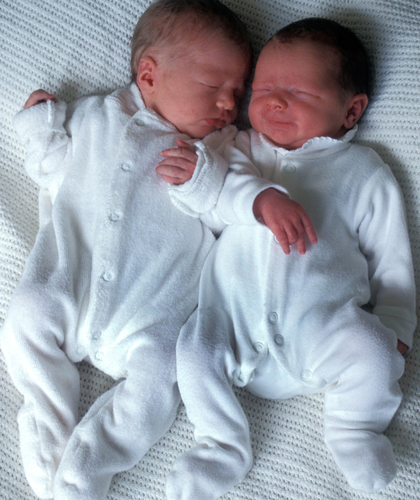
There may be recognizable differences in the weight, height, and head shape of identical twins.
Each twin has unique fingerprints and iris patterns.
Identical twins can have different personalities too, partly because of subtle dissimilarities in their very early environment.